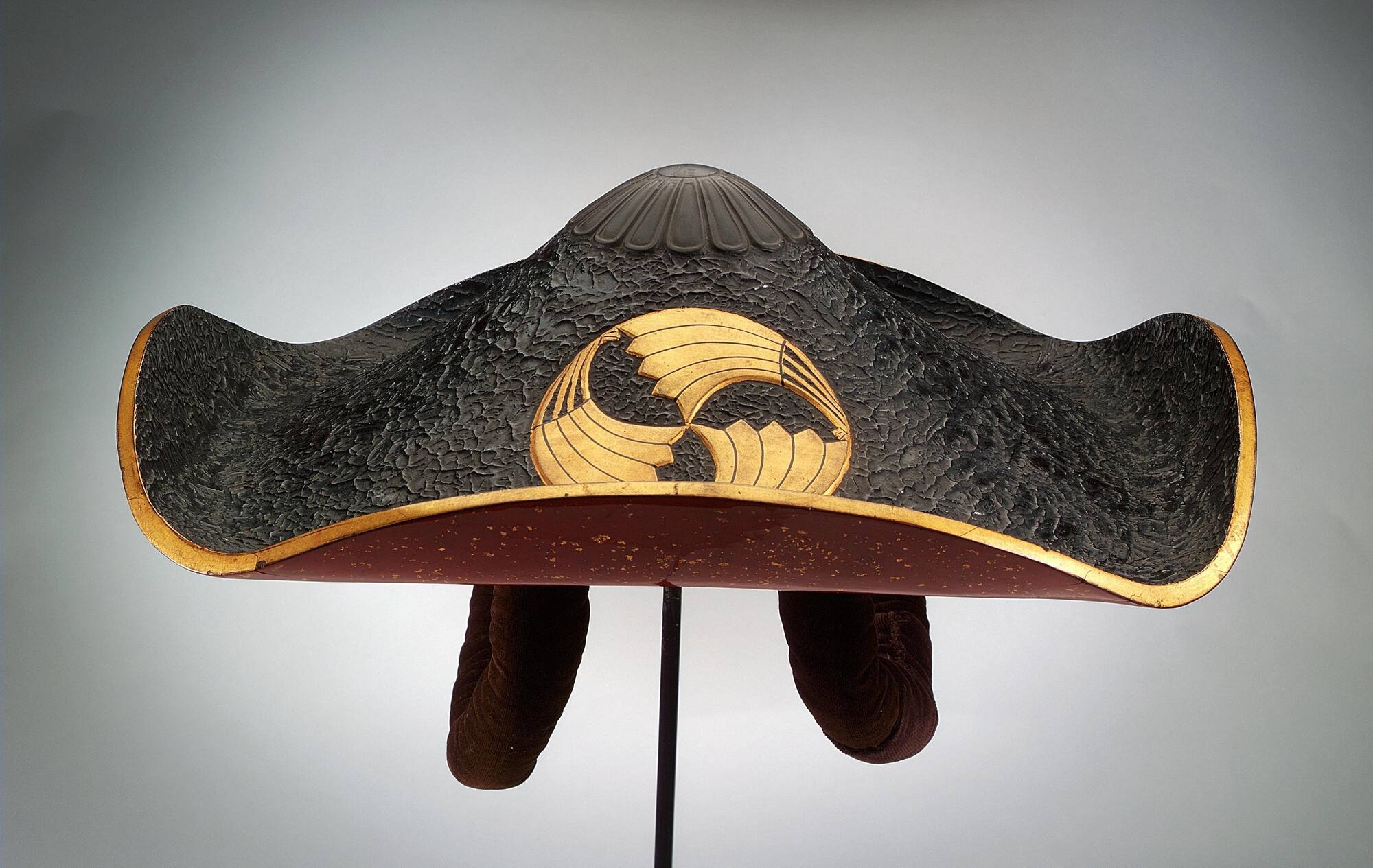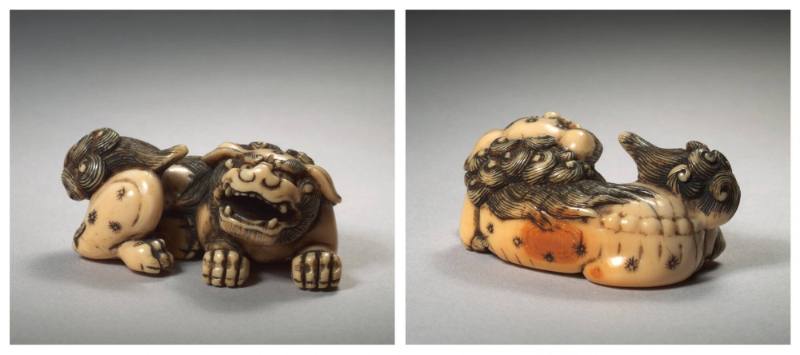
Object Details
Culture
Japanese
Date
18th century
Medium
Wood, black and red lacquer, gold, and gray velveteen
Dimensions
Overall: 3 × 14 × 14 inches (7.6 × 35.6 × 35.6 cm)
Credit Line
Gift of Dr. and Mrs. Frederick Baekeland
Object
Number
98.061.001
BRIEF DESCRIPTIONThis hat, which once belonged to a samurai, was known as a jingasa.WHERE WAS IT MAD(…)
BRIEF DESCRIPTIONThis hat, which once belonged to a samurai, was known as a jingasa.WHERE WAS IT MADE?This hat was made in Japan during the Edo Period (1615-1868).HOW WAS IT MADE?This wooden hat has been decorated with layers of black lacquer on the outside and red lacquer on the inside. Gold was applied to the rim and to the decorative emblem, called a mon, on the front of the hat. Japanese lacquer (urushi) is derived from the sap of the Rhus verniciflua tree, a member of the plant family that includes poison oak, poison ivy, and poison sumac. Its extreme toxicity poses a danger for those who work with it. Lacquer is made by carefully building up thin layers of sap and letting each layer dry under warm, humid conditions. Once dry, the sap becomes rigid and impervious to water, insects, and most solvents.HOW WAS IT USED?This hat was likely worn by a member of the samurai class during ceremonial occasions, such as processions.WHY DOES IT LOOK LIKE THIS?The round emblem on the front of the hat is unique to a particular family lineage. It is like a family crest, and is called a mon. Mon were first used during the Heian period (794-1185) when noble families began decorating their ox carriages with designs derived from objects in nature. These designs came to be used exclusively by individual families. Samurai warriors used mon to identify friend from foe on the battlefield.This particular mon is composed of three folding fans arranged in a swirling circle. The padded, velveteen circular cords that descend from the hat were used to help secure it to the head (a cord was used to tie the two together.)












